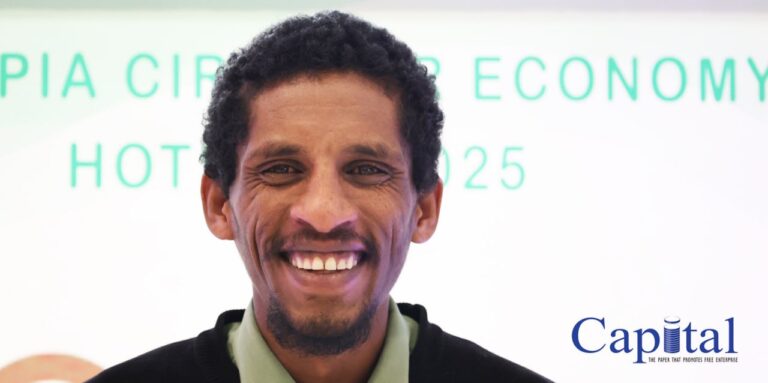In a strategic move to bolster Ethiopia’s cut flower export sector, the Ethiopian Ministry of Agriculture finalized a pivotal minimum floor price study on September 9, 2015. This comprehensive update, crafted through extensive consultations with flower producers and exporters, transcends basic regulatory compliance. It intricately weaves vital data on flower repatriation and export performance across Ethiopia’s diverse agro-ecological zones, reflecting the dynamic nature of the market. This forward-thinking approach empowers Ethiopia to adeptly tackle market challenges and maximize its export potential. These new minimum floor prices will come into effect on October 13, 2025.
New Pricing Structure
The National Bank of Ethiopia has issued a significant circular (reference letter ውይምክሪአዳ/05/1399/2025) dated September 17, 2025, which establishes revised minimum floor prices for cut flowers. The new pricing structure sets the rate for roses at $4.5711 per kg for highland farms, $4.7631 for midland farms, and $5.1292 for lowland areas. These adjustments represent notable increases of 7.27% for highland farms, 10% for midland farms, and 11.41% for lowland farms compared to previous rates. Additionally, summer flower prices have been updated to $5.2602 for highland farms and $5.2302 for midland farms, indicating a 10% rise for highland growers and a significant 15% increase for lowland regions.
While the overall price revision is poised to substantially enhance the country’s foreign currency earnings, it’s important to note that nearly 40% of Ethiopia’s floral production comes from the lowland agro-ecological zone of Ethiopia, Ziway horti export cluster. An 11.4% increase in prices from current levels could lead to a remarkable boost in revenue for the floriculture industry.
A Dynamic Pricing Model
The revised minimum floor prices are not static; they are dynamically aligned with real-time market conditions. Monthly sales data reported by growers to their respective client banks ensures that these prices accurately reflect prevailing market trends. Both private and government banks accept the selling prices and foreign currency repatriation values declared by flower exporters, provided they meet or exceed the established market price threshold.
This reliance on self-declared selling prices underscores a fundamental trust between regulatory institutions and exporters—an essential characteristic that supports and regulates the export sector. As per National Bank of Ethiopia’s Directive however, this trust must be balanced by a clear directive mandating exporters to sell their products at prevailing market prices and fully repatriate their foreign currency earnings. The Directive No. FXD/28/2006 stresses the bank’s responsibility in ensuring compliance through rigorous ex-post price verification processes. This verification provides a transparent and accurate picture of actual selling prices in foreign markets, thereby fostering trust among stakeholders, including governments, exporters, and consumers.
Currently, the National Bank of Ethiopia’s ex-post price verification is primarily focused on monitoring compliance with the minimum selling price established by the government and assessing whether exporters meet these regulated prices. While ensuring adherence to minimum price regulations is important, the scope of ex-post price verification extends beyond this function. It encompasses the analysis of actual market selling prices over time, the identification of instances of price discrimination—where different prices are offered to various buyers for the same flower varieties —and the examination of barriers to entry and unfair pricing practices that may hinder flower exporters’ ability to compete effectively in global markets.
Navigating Market Intelligence Challenges
Trust is undeniably a cornerstone in this intricate dynamic; however, the regulatory framework must also contend with the inherent limitations in accessing real-time market information. Supermarkets, retail channels, and flower auction platforms hold a wealth of invaluable data—encompassing demand trends, average selling prices per stem, top-selling varieties, and insights into export destinations. Yet, the constraints imposed by confidentiality agreements severely limit public access to this critical information. Consequently, price regulators find themselves heavily reliant on self-declared data from exporters to estimate minimum floor prices.
The question of whether this reliance on self-reported data constitutes a strength or a weakness is largely a matter of perspective. Many stakeholders harbor concerns that self-reported data can be susceptible to underreporting, thereby eroding its credibility and fostering distrust. Conversely, if exporters are aware that their data is not subject to rigorous scrutiny, they may feel less compelled to report accurately, potentially leading to systemic issues regarding data integrity.
In light of these considerations, it becomes imperative to strike a balance between leveraging the insights provided by exporters and implementing robust verification mechanisms. By fostering an environment of accountability and transparency, we can enhance the reliability of self-declared data, ensuring that it serves as a credible foundation for informed decision-making in the marketplace
.A Call for Transparency
Ethiopia has taken commendable steps by implementing a minimum floor price mechanism to regulate foreign currency repatriations in its burgeoning cut flower industry. However, as we look to Kenya—celebrated as the world’s largest exporter of cut flowers—many view a contrasting approach that merits consideration. Rather than enforcing a mandatory pricing structure, Kenya embraces a dynamic, flexible, market-driven system bolstered by advanced data analytics and risk profiling and rigorous post-clearance audits. This has led many Ethiopian growers to question why the floriculture sector of Ethiopia does not hold a similar market-driven approach to selling price monitoring and repatriation control.
While the adoption of such a market-driven approach and the utilization of data-driven insights could enhance efficiency, it does not inherently guarantee fair and equitable returns for Kenyan floriculturists.
The Gray Side of Market Freedom
The fear of under-invoicing within Kenya’s flower sector is a legitimate concern, as it poses significant risks to the economy. Under-invoicing occurs when exporters declare selling prices that are artificially low, allowing them to shift repatriation value & profits overseas while minimizing tax liabilities. Alarmingly, reports indicate that the declared export prices for flowers often fall below the recorded import prices in Europe—a discrepancy that cannot be solely attributed to freight costs.
Some practical case study conducted on some flower farms in lake Naivasha, Kenya reveal cat and mouse game between exporter and revenue office. The under- invoicing practice results in substantial financial losses for Kenya, with estimates indicating that millions of dollars in foreign currency earnings are forfeited annually. The impact extends beyond lost revenue; it also encompasses corporate taxes on actual profits, withholding taxes on disguised dividends, and other taxable income from the flower export sector. This pervasive under-reporting leads to massive illicit financial outflows, depriving the Kenyan government of crucial funds needed for public services and development initiatives.
A Call for Equitable Pricing
As Ethiopia navigates the intricacies of its flower export industry, reliance on trust alone is insufficient in the face of today’s complex global dynamics. There is an urgent imperative for reform aimed at enhancing transparency and accountability within the sector. By implementing robust measures for export price verification, Ethiopia can effectively address the pervasive issue of under-invoicing, thereby safeguarding its economic interests and ensuring that flower exporters contribute their fair share to the national treasury. By enhancing transparency and leveraging data-driven insights, Ethiopia can foster a more robust and competitive flower export industry that not only supports economic growth but also ensures fair returns for all stakeholders involved
Drawing lessons from other countries that have adopted digital ex-post market price verification and seasonal forward strategies, Ethiopia has the opportunity to explore innovative regulatory frameworks that foster a more equitable environment for its flower exporters. Such reforms would not only enhance the integrity of the sector but also unlock essential resources for public investment and development initiatives.
An Invitation for Mutual Transparency
While regulatory agencies often concentrate on selling prices, exporters are increasingly focused on current financial auditing practices. A critical question arises: Are auditors exercising the necessary professional skepticism and clarity concerning the assumptions and information pertinent to the floriculture sector, rather than merely rubber-stamping claims? Moreover, is there an established industrial standard that can fairly balance tax assessments while accurately evaluating a company’s reputation and financial health?
It is essential to recognize that transparency should not be a one-sided endeavor; it must be a reciprocal process. When only one party engages in transparency, it creates an imbalance that fosters hypocrisy and inefficiency, ultimately eroding trust. This lack of mutual transparency hinders businesses from operating at their maximum potential
To sum up Ethiopia’s cut flower industry stands at a intersections where new pricing structures and a commitment to transparency can pave the way for sustainable growth. By fostering trust while ensuring accountability, stakeholders can navigate the complexities of the market landscape—ultimately benefiting the sector, exporters, service providers and buyers alike.
Mekonnen Solomon is Horticulture Export coordinator and senior staff in floriculture industry of Ethiopia, he can be reached via ehdaplan@gmail.com






